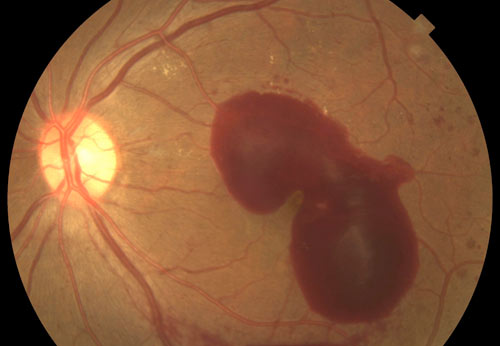
 |
Non Proliferative Retinopathy |
 |

Non Proliferative Retinopathy | ||
Diabetic retinopathy is usually first noticed as the non-proliferative type. The retina may have small hemorrhages, microaneurysms, lipid exudates or inflammation called diabetic macular edema. | ||
| ||
Diabetes mellitus. | ||
| ||
You may not have any vision problems in the early stages of diabetic retinopathy, so it is important to have regular retinal examinations to maintain your sight. Retinal inflammation from diabetes may cause distorted or blurry vision. Bleeding from diabetic retinopathy may cause cloudy vision. If the bleeding is severe, it may cause a loss of vision in the eye affected. This usually occurs on both eyes. | ||
| ||
Diabetic retinopathy is diagnosed by retinal examination, special pictures called a fluorescein angiogram, an OCT (optical coherence tomography) scan and sometimes an ultrasound of the eye. | ||
| ||
Mild diabetic retinopathy may not require any treatment. Moderate to severe diabetic retinopathy may require injections of medication to the eye, laser treatments in the retina, or in some cases surgery. | ||
| ||
Maintaining a Hemoglobin A1C level of 7.0 or below will help prevent diabetic retinopathy from advancing to severe stages. Having regular retina examinations and any necessary treatments will help maintain your vision once diabetes has impacted your eyesight. | ||
| ||
 |
 |
|
